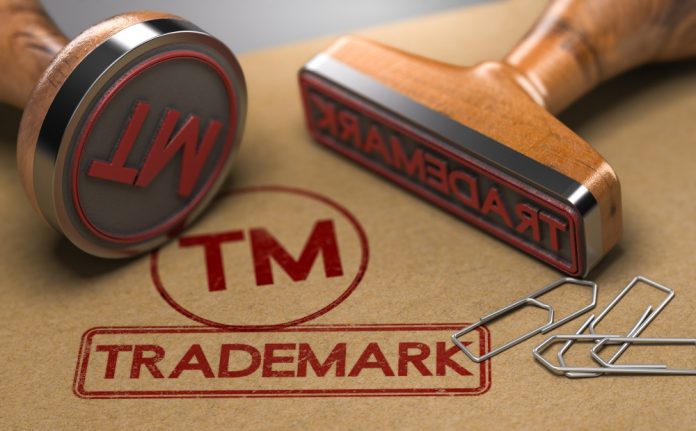This article is written by Shreya Patel. This article discusses sub-section (1) of Section 20 of the Trade marks Act, 1999. It explains the said provision in detail along with case laws to support the same. This article also discusses the requisites for a trade mark to be accepted, meaning of trade mark journal, all information included at the time of trade mark advertisement, the importance of advertising a trade mark application, and the types of trade mark acceptance. The article also throws light on the meaning, implication and differences between advertised before acceptance and advertised as acceptance.
Table of Contents
Introduction
Trade marks are an essential asset for all types and kinds of businesses in the world. The law and rules that protect the trade marks in India are The Trade Marks Act, 1999 (hereinafter mentioned as ‘the Act’) and the Trade Marks Rules, 2017 (hereinafter mentioned as ‘the Rules’). For any business to stand out in the current competitive market, branding plays a key role. Majority of the time, the consumer’s decision to buy a product or service is influenced by the image of the brand and the company. Trade marks act as a communication tool between the business and its consumers. Trade marks enable consumers to easily remember about the company and its related products and services.
A trade mark is a valuable intangible asset for the businesses, so protecting it is also very important. The businesses in India can protect their trade marks by getting them registered with the trade mark registry. An application is filed along with the graphical representation of the trade mark in the trade mark office. The trade mark application is advertised in the trade mark journal by the Registrar. The goal behind the same is to give the public (third party) an opportunity to oppose the trade mark registration in question. After the trade mark application gets approved by the registrar it gets published in a trade mark journal.
In this article we will discuss in detail about the advertisement of trade mark application in the journal and the rights which result from such advertisement.
Requisites of a trademark to be accepted
Sections 9 (absolute grounds) and 11 (relative grounds) of the Act mention the grounds on which the trade mark registration can be refused. The entire process of trade mark registration is crucial for protecting the trade mark of the business. Section 9 states the grounds that absolutely refuse the registration of such a trade mark. A trade mark cannot be registered if it has no distinctive character, and is not able to distinguish the goods and services of one person from another. The trade mark should also not be generic. Similarly there are relative grounds of refusal as well. The mark cannot be similar or identical to a mark which is already registered. The mark should also not be very identical to a well known trade mark in the market. A trade mark should not be conflicting in nature to the already registered marks under the Act, and should not infringe the rights of the registered owner.
To overcome the absolute and relative grounds of refusal, the applicant can try to explain to the registrar how his mark is distinctive in nature. It can also be explained how the mark is not related to the mark which is similar to the applicant’s mark, and the applicant can also show the proof of his prior use. The degree of the similarity can be observed and justified on how the marks are different, the applicant can also show the difference of the trade mark class if applicable. The applicant can also check whether the mark that is similar to his is still in use or not. If the mark is abandoned, the applicant can use this in his case to prove that his application is novel in nature.
Section 20(1) of Trade Marks Act, 1999
Section 20 of the Act deals with advertisement of trade mark application, which can be done either before acceptance or after acceptance. This advertisement of the application is done with the intention of providing the public a chance to oppose the trade mark registration.
Section 20(1) of the Act states the process of advertising the trade mark application in the trade mark journal when a trade mark registration is accepted either absolutely or with some conditions or limitations. The proviso of the Section states some situations in which the registrar can advertise an application before acceptance, if there is an objection under the Section 9(1) or Section 11(1) or (2) or if the registrar thinks doing the same will expedite the process under some circumstance.
Trade marks rules on advertisement of application (Trade Marks Rules, 2017)

Rule 39 of Trade Marks Rules, 2017
This rule talks about the manner in which the advertisement of the trademark application has to be done. Every application for the trademark registration has to be advertised in the trademark journal whether absolutely or with conditions as mentioned in Section 20(1). The trademark may also be registered before acceptance. The application can also be re-advertised if there are any changes made in the trademark application due to some error or some addition in the application.
Rule 40 of Trade Marks Rules, 2017
This rule states that if after the advertisement of the trademark application, the application is amended or had an error which has been corrected, the registrar, if he thinks so, can add an notification in the journal stating the application number, trademark class, principal place of business with its address and name along with the applicant’s name, and in case absence of the principal place of business, the place of service, the journal number when it was advertised, and the amendment of correction made.
When there has been an error in the application of the trademark or goods or service specifications, expect when such mistake is an insignificant spelling mistake, mistake in statement of use, in the trademark class, etc., then in such cases the registrar holds the power to cancel the previous trademark advertisement and may advertise the application again.
Rule 41 of Trade Marks Rules, 2017
This rule states that a person can request the registrar for the particulars like the date and number of the journal in which the application is going to be advertised. The same can be done by Form TM-M and the registrar will furnish such information to the person who has requested the same.
Purpose and intent behind Section 20(1) of Trade Marks Act, 1999
The main purpose and intent of Section 20(1) is to ensure that the trade mark application is advertised in the journal as per the rules and regulations laid down in the Act. An application for the mark is published in the trade mark journal to invite the public to oppose the registration if it violates their rights in any sense. Under Section 20(1) the registrar should have a specific reason to advertise the application before acceptance.
Forms of acceptance
A trade mark application can be in two forms, i.e., absolute or conditional acceptance. The registrar decides whether the mark which is applied for registration should be granted an absolute acceptance or conditional acceptance.
Absolute acceptance
Absolute acceptance means the application is accepted as it was. Let’s understand this with an example. A owns a business named ‘Om furniture’ and wants to register a trade mark for the same. The mark is a picture of a chair adjacent to the om symbol. The registrar at the time of examining finds this mark distinctive and graphically representative and hence approves the same. Now the registrar will advertise the application in the journal for inviting opposition. In case no opposition arose, or arose but resulted in favour of A, the trade mark of A will get registered with absolute acceptance.
Conditional acceptance
When a trade mark is accepted with some conditions which are to be followed mandatorily, such acceptance is known as conditional acceptance. These conditions are laid down by the registrar and can be in relation to anything included in the mark. For example, XYZ has applied for a trade mark where the words XYZ are written with blue and black colour and the full form of their business is written directly below it in italics.
The registrar at the time of reviewing and examining the mark comes to know that there already exists a mark XYZ with white and red colour. Both the marks in different classes and the goods are totally different in nature. In this case the registrar can accept such an application with some conditions like the mark should not be used with the full form written below it and the colours for the same should also not be changed in any circumstances. This type of acceptance is commonly referred to as conditional acceptance where the trade mark after the registration has to compulsory follow the conditions which are laid down by the registrar and non compliance of the same will result in violation of the rights of the other similar registered trade mark.

The conditional acceptance can also be related to the descriptive elements of the trade mark. For example, there are some products or services which are granted registration with some conditions like for milk products, a disclaimer is put on every packet that the company has no proprietary over the descriptive element of the trade mark.
Similarly in case of KIA Motors, the trademark was registered with the conditions that as the word ‘motors’ is an generic term, it would not be counted under the exclusive use requirement by the trademark owner separately. The word ‘motors’ can be used by other individuals or businesses without any legal attention to it.
Advertisement in the journal
Trade mark journal
A trade mark journal is published weekly by the trade mark registry which includes the trade mark which is approved by the registrar. In the process of trade mark registration, publishing in the trade mark journal is one of the crucial steps. When a trade mark is published in the trade mark journal it does not mean that the trade mark is registered, this step simply means that the trade mark is approved by the registrar and is now open for third party opposition. A trade mark journal is also often used for carrying out trade mark searches before the trade mark application is filed. The trade mark journal is published online and anyone can have access to the same.
The applicant of trade mark, his lawyers, and competitors in the market can use the trade mark journal to keep themselves updated. When a trade mark application gets published in the journal the public is given a fair chance to voice opposition or disapproval against the trade mark that is published. All the trade mark owners are advised to view the journal time and again in order to monitor and ensure that no infringement of their trade mark takes place. When a trade mark infringement takes place, it hampers the goodwill of the mark and also leads to brand dilution.
Details included in a trade mark journal
When a trade mark application is published in the trade mark journal it consists a lot of important details such as:
- The address and other vital details of the applicant;
- Trade mark details;
- The picture of the trade mark;
- Trade mark class under which the same is being applied for registration;
- Statement of use of the trade mark;
- The details of the agent and his service address;
- Priority claim;
- Date of publication along with the timeline for opposition by third party;
- Renewal timeline of the trade marks which are registered.
The above mentioned list is not exhaustive in nature and a trade mark journal is used for various other purposes as well.
Advertised before acceptance
When the status in the trade mark application shows “advertised before acceptance”, it means that the mark is advertised in the journal, but there are still some reservations in relation to the mark. Under Section 21 of the Act, a chance for opposition by the third parties is given as soon as the mark gets published in the journal and the period for 4 months starts from the day the mark is published. A mark can be advertised before acceptance or as accepted and then advertised. Section 20(1) of the Act talks about the provisions pertaining to advertising before acceptance and states that a mark can be advertised before it is fully accepted. Here the registrar will consider the provisions under Section 9(1) and 11(1) or (2) of the Act and apply the same to the mark that is applied for registration.
In this case the registrar is not fully convinced about the mark, whether it is distinctive in nature or not and whether there are other similar marks present in the market, then in this case the mark is advertised before the acceptance. It is also mentioned under Section 20(1) that acceptance before advertisement also takes place if the trade mark office feels that it is expedient to do so. The chances of getting the mark advertised before acceptance are less as compared to advertisement after acceptance, as the mark usually gets hit by absolute or relative grounds of opposition even if there are any minor similarities.
Advertised as accepted

When the status of the trade mark application is “advertised as accepted” means that there were no objections raised from the side of the trade mark registrar at the time of examining the mark for an existing similar or identical mark. When the status directly shows “advertised as accepted” the mark is directly accepted for advertisement in the journal and no objection is raised under Section 9 and 11 of the Act. If some objections are raised during this stage then the applicant is informed about the same and he has to reply to the report shared by the registrar. The report states how his mark is novel and not similar and identical to any other mark which is either registered or is in the process of registration and will also not infringe any rights of the other party.
In case of “advertised as accepted” the office of trade mark believes that there are no issues with the mark and it is directly ready for being published in the trade mark journal. However, such instances occur less, when the registrar is fully convinced that the mark is very distinctive in nature and is not similar to any other mark. When the mark gets advertised as accepted this does not mean that the mark will directly be registered now. The mark will still be published in the trade mark journal for the period of 4 months and an opportunity will be given to the third parties to oppose such registration. So even after having no objection from the side of the trade mark office it is fully possible that the mark gets opposed by a third party and further after the hearing it also gets refused.

Difference between advertised before acceptance and advertised as accepted
| Basis | Advertised as accepted | Advertised before acceptance |
| The nature of acceptance | When the trade mark is advertised after the acceptance of the Registrar, it implies that the trade mark is open for third party opposition. | In case of advertising before acceptance, the registrar examines the application as preliminary and comes to a decision that the trade mark does not violate any of the rights of the third party or any provisions of the Act and is not conflicting in nature. |
| Legal implications | When a trade mark is advertised after acceptance, the applicant has stronger legal rights as the trade mark has already been open for third party opposition and has passed the same. | An applicant is not conferred any legal right when acceptance before advertisement takes place. The trade mark application is still undergoing registration. |
| Opportunity for opposition | Once the trade mark is advertised after the acceptance, any third party can within the period of 4 months oppose the trade mark registration of that particular trade mark. | Opportunity of opposition is not there for the third party since the application is not yet open for public scrutiny and it is not yet published in the journal. |
| Finality of registration | The finality of the registration cannot be challenged after no one opposes it during this stage and it then proceeds to be accepted as it was advertised in the trade mark journal. | There can be challenges even when a trade mark is accepted before advertisement. |
Recent judgements relating to trade mark advertisement
Jai Bhagwan Gupta vs. Registrar Of Trade Marks & Ors (2020)
Facts of the case
In this case, the petitioner had his trade mark ‘Jeera Pujari’ and ‘Jai Pujari Brand’ duly registered and also renewed both the marks on a timely basis. The respondent was advertising the marks which contained the word ‘Pujari’ in the same trade mark class despite this. An opposition was filed by the petitioner in relation to such identical marks. A writ petition was filed by the petitioner asking for the relief in relation to quashing the impugned publication of these trade marks and to refrain from advertising such marks in future which are deceptively similar or identical to the already registered trade marks.
It was argued by the petitioner that the respondent should have paid more attention at the time of examining the application for similar marks for the absolute and relative ground. Advertising such a similar mark in the same class directly threatens the trade mark of the petitioner.

The respondent argued back stating that one of the petitioner’s applications is abandoned while the other is in the pending stage which states that all the available statutory remedies are already availed by the petitioner.
Issues raised
Whether the trade mark acceptance or advertisement before the acceptance can be granted to the trade mark which are registered already and are also similar in nature?
Judgement of the case
It was held by the Hon’ble Delhi High Court that the trade mark will only be advertised before acceptance in some exceptional circumstances. This practice should not be followed on a daily basis. The trade mark application can be accepted using some limitations, it can be accepted with or without some conditions and advertised before the acceptance. Some conditions can be put forth by the registrar if there are some identical or deceptively similar marks already registered. The reasons for the same should also be mentioned by the registrar. The petitioner’s right to oppose will be available and the same has to be decided as per the law.
Laxmi Kohlu Ghar Through Its Partner Sh Arun Kumar vs. Controller General Of Patents Designs And Trade Marks And Registrar of Trade Marks & Ors. (2023)
Facts of the case
In this case, “Laxmi Kohlu Ghar” and business specialised in making edible oils and its related products approached the High Court of Delhi in relation to trade mark application concerns. It was claimed by the petitioner that the procedure to examine the new applications of the trade mark was very inconsistent and unfair. The petitioner mentioned that some trade marks which did not deserve the acceptance were accepted without giving any valid reasons.
The lack of transparency was also pointed out by the petitioner in the process of refusal, acceptance, or advertising the trade mark applications and the reasons for the same were not being disclosed online. The petitioner also claimed that they were the first adopter of the mark ‘Laxmi’ and claimed the statutory rights related to the trade mark. It was also alleged by the petitioner that the directions issued by the Hon’ble Delhi High Court in the case of Jai Bhagwan Gupta vs. Registrar Of Trade Marks & Ors (2020) are not being followed.
Issues raised
Whether the trade mark advertisement and examination procedure inconsistent, unfair, and lacked transparency?
Judgement of the case
The court relied on the judgement given in Jai Bhagwan Gupta vs. Registrar Of Trade Marks & Ors (2020) and put emphasis on the registrar to pay more attention before advertising the trade marks as mentioned under Section 20(1) of the Act. The applicants are burdened when the trade mark application is advertised before the acceptance. An order is to be passed by the registrar in order to justify the advertisement of trade mark application after or before acceptance.
The court in this case had emphasised that when a trademark is accepted or is rejected a brief order has to be passed, for the reference of the litigant. The registry has to make such an order available on an online portal, and if the same is not done, then such an order’s copy has to be uploaded when someone requests it by email and there should not be a need to file an RTI application for the same. A simple email request should suffice. The matter is currently pending in the court.

Conclusion
A trade mark plays the role of an unique identifier for the specific goods and services. A trade mark can be a symbol, sign or word and has to be graphically representative. When a trade mark is advertised the main aim behind the same is to provide all relevant details to the public about the trade mark. An opposition can be filed against the trade mark if any similar trade mark is already in use in the market. If the information published in the trade mark journal is proved to be false then the advertisement is cancelled and re-advertisement is done before the registration of the trade mark is granted.
The advertisement stage in the entire trade mark registration process is equally vital as compared to the other stages. The registrar of trade marks has the key responsibility to conduct a thorough examination to make sure that the mark that is being applied for the registration does not violate the rights of any registered trade mark owner.
Frequently Asked Questions (FAQs)
Why is a trade mark application advertised in the trade mark journal?
The trade mark application is advertised in the journal in order to give a chance to the third party to oppose such trade mark registration if they feel that it infringes their trade mark rights.
Is it necessary to get a clearance from the trade mark register in order to advertise the trade mark application in a journal?
Before the mark gets advertised in the trade mark journal, it is compulsory to pass the approval of the trade mark registrar. If the registrar finds some similar marks in the system then he will send the same to the applicant and the applicant has to reply to the report justifying and by giving proof that his mark is not similar to the other marks and will not violate the rights of other owners.
For how many months is the trade mark application advertised in the journal?
The approved trade mark application is published in the trade mark journal for a period of four months.
What does accepted status mean in the application of a trade mark?
When the status of the trade mark application shows ‘accepted’, it means that the trade mark application after the thorough review and examination by the trade mark registry is approved as per the requirements laid down under the Act. The trade mark is published in the trade mark journal for third party oppositions.
For how many years is a trade mark registration valid?
Section 25 of the Act states that the trade mark registration is valid for a period of ten years in India. The trade mark registration can also be renewed every ten years.
Can a registration of a trade mark be removed after the registration?
A registered trade mark can be removed in India, even after it has been registered. If the trade mark is not in use after the registration, is registered by mistake or the same is abandoned by the owner then under Section 47 of the Act. Such removal can be initiated by any party who feels that their rights are violated.
Can any changes be made in the trade mark application after it is filed?
A trade mark can be amended after it is filed in India, but only those changes that do not change the substantial nature of the trade mark are allowed. To make some amendment in the application of trade mark Form TM-M can be filed by the applicant himself or his authorised agent. If any kind of major changes are made in the trade mark, which change the main essence of the mark then such changes are not allowed as it changes the trade mark as a whole.
Can a foreign company apply for a trade mark registration in India?
A foreign company can apply for a trade mark in India. All the necessary rules and regulations are to be followed by the foreign company in order to apply for a trade mark.
How many trade mark offices are situated in India?
There are in total 5 trade mark offices in India. The headquarters are situated at Mumbai where the other trade mark offices are at Kolkata, Ahmedabad, Chennai and Delhi.
How to view a trade mark Journal?
For viewing the weekly published trade mark journal, you can visit the website of Office of the Controller General of Patents, Designs & Trade Marks Department for Promotion of Industry and Internal Trade Ministry of Commerce & Industry, Government of India.
References
- https://ipindia.gov.in/writereaddata/Portal/IPOGuidelinesManuals/1_32_1_tmr-draft-manual.pdf
- https://navjyot.net/wp-content/uploads/2020/10/17-1.pdf
- ‘Brief Order’ Of Advertisement Before Acceptance Of Mark Must Be Available On Trade Mark Registry’s Portal For Litigants’ Reference: Delhi High Court
- Trademark Journal Publication – IndiaFilings
- Advertisement of Trademark Application – IndiaFilings
Students of Lawsikho courses regularly produce writing assignments and work on practical exercises as a part of their coursework and develop themselves in real-life practical skills.
LawSikho has created a telegram group for exchanging legal knowledge, referrals, and various opportunities. You can click on this link and join:
Follow us on Instagram and subscribe to our YouTube channel for more amazing legal content.
 Serato DJ Crack 2025Serato DJ PRO Crack
Serato DJ Crack 2025Serato DJ PRO Crack









 Allow notifications
Allow notifications



